My Parker Fountain Pen Keeps Drying Out: How To Fix It
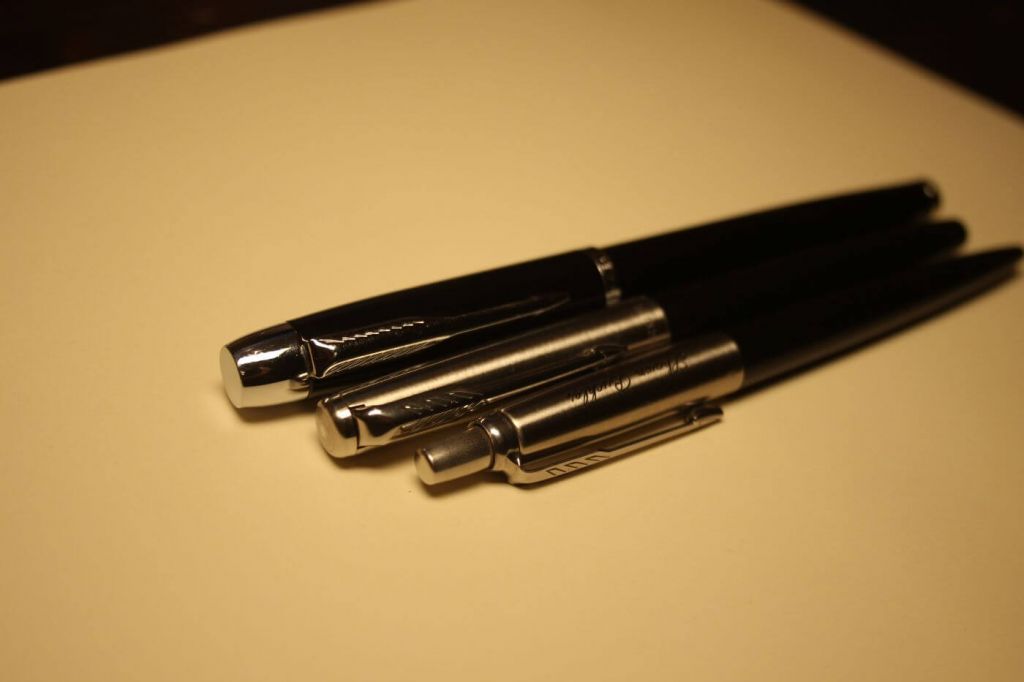
I have a Parker IM fountain pen that keeps drying out. While researching the problem, I thought I might as well write an article to help others out.
How to fix a dry Parker fountain pen? Clean the nib and feed with lukewarm tap water. Inspect whether the cap seals: you shouldn't be able to wiggle it. Change out the ink for a thinner variant, especially if you're using Parker's Quink Black. Tape off the breather hole underneath the cap clip. Also, make sure to store the pen horizontally.
There's a little more to those fixes, and there are more things that could be responsible for your dry pen.
My fiance gifted me my Parker IM. It was my first serious fountain pen, and I loved it. While I enjoy the classic design, it didn't kick off my fountain pen experience in a particularly good way. I didn't know this at the time: I just thought it looked incredible.
Fountain pens can be incredibly wet writers, making them a joy to write with. But my sleek little Parker was so dry I had to troubleshoot it each and every time I wanted to use it. It got so bad that I had this specific starting ritual as if I were kickstarting a moped. So how is my Parker IM doing today? Will I be able to save it? Spoiler: yes, it's fine, and yours will probably be fine too after reading this article.
In this article:
Parker-Specific Problems
Parker pens do come with some specific problems that are well-known in the fountain pen community. While Parker makes very smooth nibs, they are also known for being Britishly dry pens. Luckily, there are solutions, and before you go out and get a different brand, there are some great cheap fixes to try.
Why do Parker fountain pens keep drying out?
- Some Parkers have a large breather hole under the clip of the cap
- Parker's Quink Black is infamous for clogging up pens
- The narrow ink channels in the feed might clog with a thicker ink
- Parker nibs tend to be small and stiff
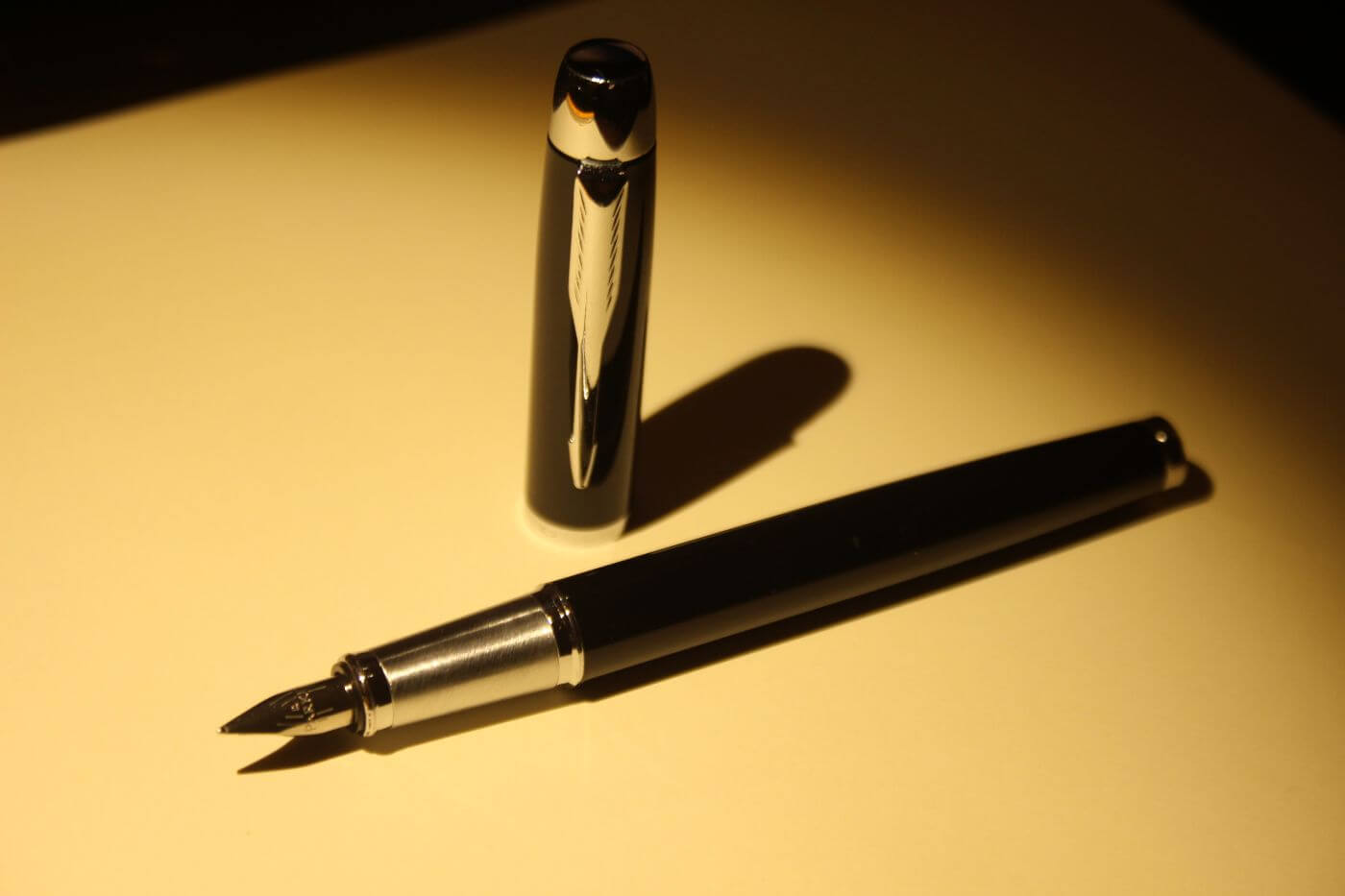
Parker's modern pens come with a pretty large breather hole. This breather hole is located on the cap under the clip. It is there to release condensation. Fountain pens can release water from their ink reservoir when the room temperature changes. However, some Parkers have a little design flaw: their breather hole is too big. For example, my precious Parker IM is known for this problem. Will I be able to save it?
Parker pens tend to be dry by design, which has its advantages and disadvantages as well. A big advantage to dryer pens is that they won't leak as quickly. The big downside, however, is that they write like shit (my humble opinion). That's why, in most cases, I opt for a wetter pen; I'll take the inky fingers that come with it.
I haven't dissected a Parker pen, but from my experience, I can think of two main reasons Parkers are drier than other fountain pens:
- They use number 5 nibs that are very stiff
- Their feeds have very narrow ink channels, making them dryer as well
Now, I don't enjoy criticizing brands, but I can't escape it. If you produce dry pens, you should probably not also produce the driest ink known to mankind and sell it under the same brand. In all their wisdom, that's exactly what Parker did though, and that ink is their black Quink. It is a fast-drying ink that is reasonably saturated, and it is a nice-looking black that indeed dries fast. However, it does tend to clog up one brand of pens in particular: Parkers.
Problems That Will Dry Out Any Fountain Pen
Now, there are plenty of general problems that will dry out any fountain pen, not just Parkers.
- The cap doesn't seal properly
- The feed is clogged
- The ink is too viscose
- You store the pen with the cap facing up
I want to quickly touch on that last one before moving on to the specific fixes for your Parker pen. Some people store their fountain pens with the cap facing up, in a pen cup, for example. Since the ink in a fountain pen needs to travel down through the feed (and that might take a while), you want to store your pens cap down, or ideally horizontally. I have them laying flat on my desk in a sleeve my fiance knitted for me.
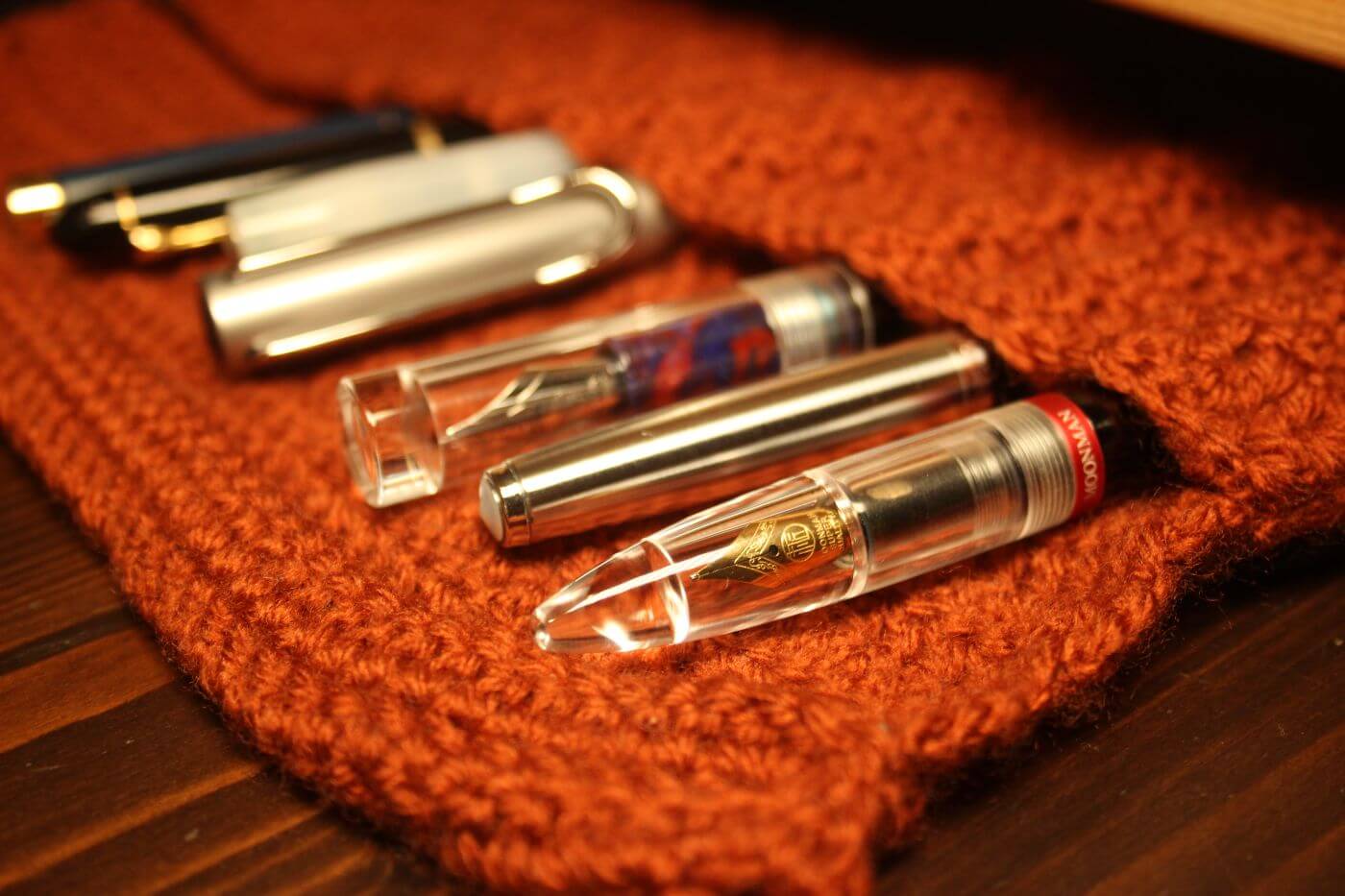
There are a lot of other reasons for hard starting pens. If you need more fixes, you should read my article on how to fix a dry starting pen. That article contains an in-depth explanation of all general reasons for drying out.
4 Easy Fixes You Can Try Straight Away
What to do if the ink in your Parker fountain pen isn't flowing? First, try to clean the nib and feed with regular tap water. Check whether the cap seals properly. Change the ink to something thinner and store the pen horizontally. If that doesn't work, try taping off the breather hole under the cap clip.
Below, I'll go over solutions to the most common Parker problems. I'll tell you how to fix a dried out Parker fountain pen:
- Clean the nib and feed
- Tape off the breather hole
- Use a thinner ink
- Widen the tines with a thin piece of metal
Clean the nib and feed
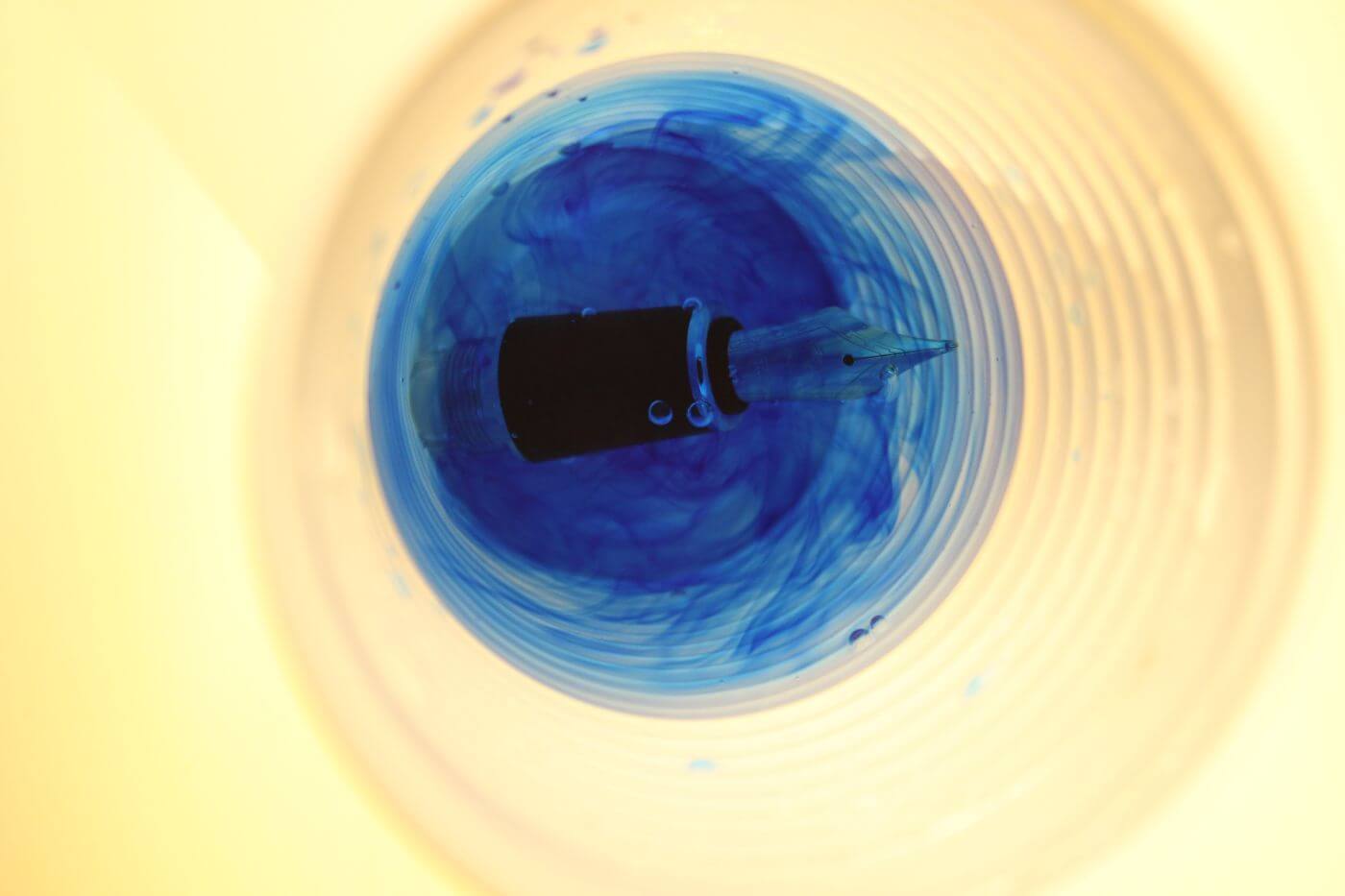
In most cases, a pen dries out due to a clogged up feed. The easiest way to fix dry pens generally is to rinse the feed under the tap. You can use lukewarm water to ensure you don't damage any plastics. If that doesn't resolve your problem, try soaking the feed and nib in water overnight. In most cases, this will really improve how well the pen delivers its ink to the nib. I recommend cleaning out your pen like this every month or so. It will help maintain good ink delivery. I find it also became somewhat of a meditative practice I cherish.
Tape off the breather hole
As I've mentioned before: on some Parkers, the breather holes are too big by design. It should be located underneath the cap's clip. You can check whether your cap has a breather hole by holding it against the light, blowing in the cap, or holding it underwater cap-up and checking for bubbles.
If you have a breather hole, take a small piece of tape and put it over the hole. Try your pen over the next few days to see if it fixes your problem.
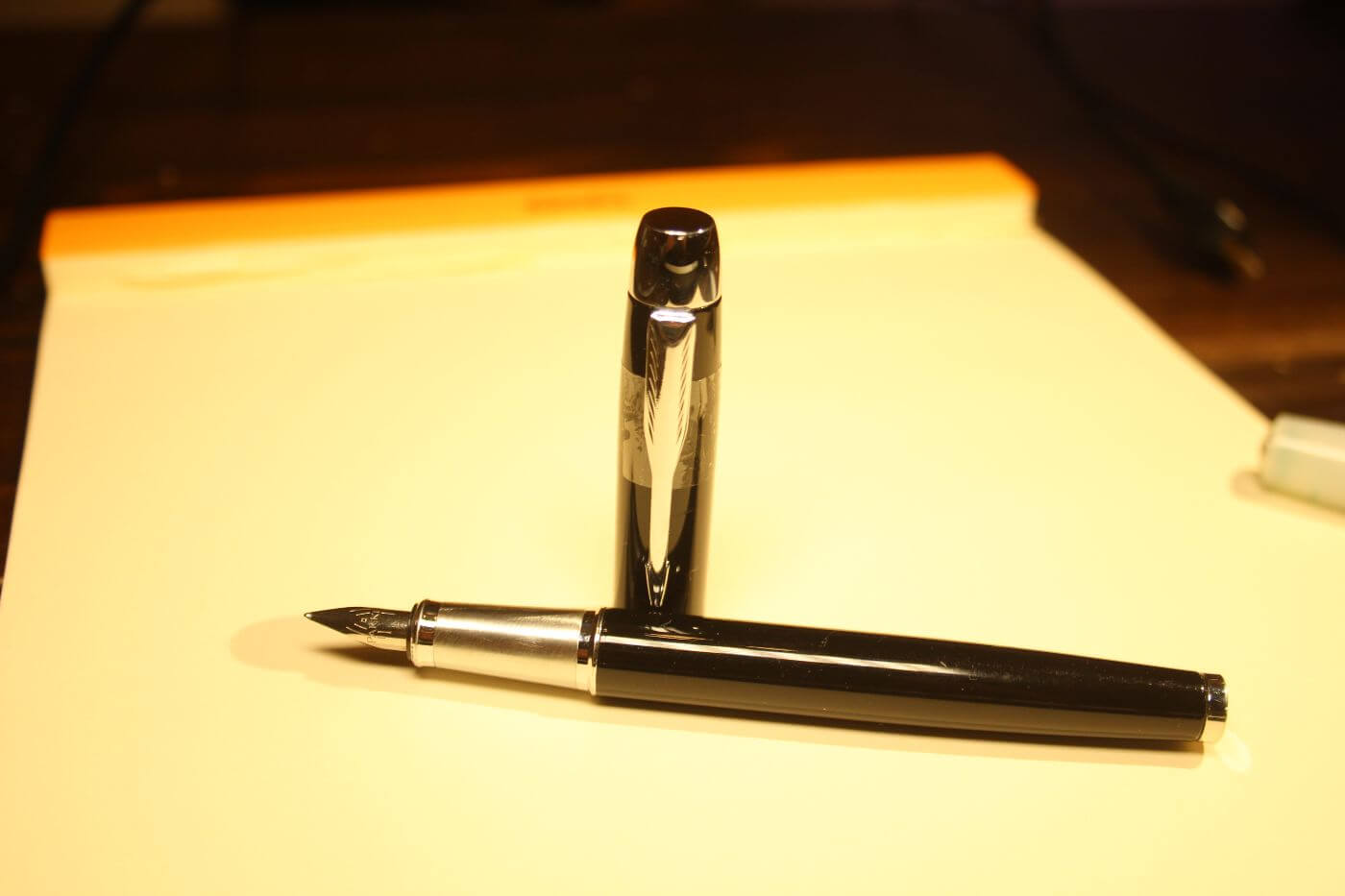
Use a thinner ink
If you're using one of Parker's Quink inks, or cartridges for that matter, I recommend switching to a thinner brand. Lamy and Waterman inks tend to be a bit thinner. Blue inks are generally the thinnest since blue requires the least amount of pigment. That's why blue is usually a great choice for more fragile pens.
Widen the tines with a thin piece of metal
If your Parker nib is unusually stiff, it might affect your ink flow. Something I've done to increase the ink flow is widening the tines of the nib with a safety razor blade. You could also use another slice of metal, as long as it's thin and clean.
The tines are the two points of the nib. They come together at the tip of the nib. If those are too close to each other, ink flow will be bad.
You put the blade in between the tines and move it up and down a couple of times. Then, rinse the nib, dip it in ink, and test the result. Repeat until happy.
If you're going to widen the tines, please make sure to use the right tools. You can get a special fountain pen tine-widening-blade at speciality shops. You should proceed carefully: you could easily ruin your nib. If you damage your nib, that's the end of your pen.
Here's a good instruction video on how to do this:
Has My Parker IM Survived?
After a year of usage, my Parker IM wrote terribly, if it wrote at all. So I set out to fix it. Little that I knew, you have to actually flush the buggers. Now, I clean out all of my pens at least once every few months. With two dozen pens, that takes a couple of hours, but I enjoy it thoroughly.
Today, my cherished Parker writes wonderfully after using all four tips above. It is in great shape and writes smoothly, and a lot wetter as well (which I like). I'm pleased to say that I had genuinely saved it, that is until I dropped it on the head on rock-hard asphalt — time to get a new cap.
Did you find the answer to your specific question?
👍 48 👎 8
Comments
Steven Lui
I suffer the same problems of my 2 Parker IM fountain pens and I didn’t know this breather hole exist unit I read your article and see it right underneath the cap’s clip. I believe I found the prime suspect of the crime.
Liis
Parker does produce substandard stuff, especially low range pens and the horrible ink. Looking back to all the Vectors, Jotters in school - awful pens! Uncapped for a minute and no longer flowing. Thought the more expensive IM line would be better - what a mistake that was. Gilding was gone in 6months, writing experience as awful as with Jotters. Wish I’d gotten the bloody Pilot Kakuno decades sooner alas Parker had monopoly in Estonia. Pilot had to be ordered overseas.
Leave a comment